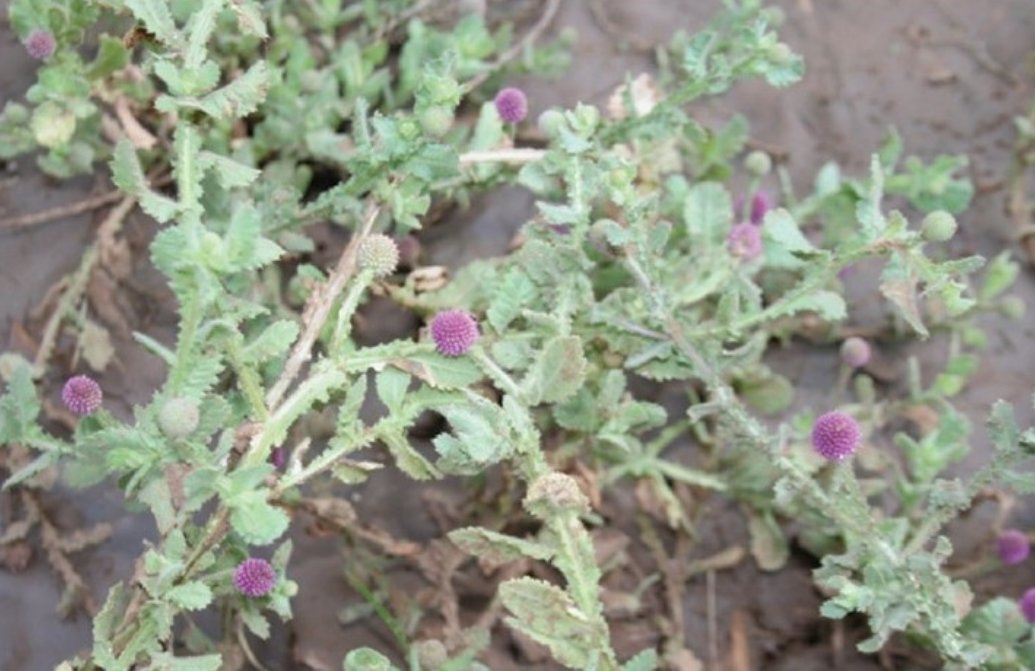 Globe thistle (Sphaeranthus indicus) is a traditional herb used in Ayurvedic medicine. The plant is medicinal due to the unique phytochemistry it possesses. The plant contains a number of medicinally relevant phytochemicals including a large group of phytochemicals called the sesquiterpenoids. These include but are not limited to the sesquiterpene lactone (7-hydroxy eudesma-4- en-6,12-olide), a sesquiterpene acid ( 2-hydroxycostic acid) and the sesquiterpenoid alcohol (β-eudesmol and ilicic acid). A subgroup of sesquiterpenes called the eudesmanoids are also present in the plant. Other phytochemicals present in the plant include flavonoid glycosides and sterol glycosides. Of the flavonoids, both isoflavones and flavones are present. An essential oil is also present in the plant and this oil contains methyl chavicol, d-cadinene, α-ionone, p-methoxycinnamaldehyde, α-terpinene, citral, geraniol, geranyl acetate, β-ionone, oscimene, eugenol, sphaeranthene, sphaeranthol, estragole, indicusene and the alkaloid sphaeranthine.
Globe thistle (Sphaeranthus indicus) is a traditional herb used in Ayurvedic medicine. The plant is medicinal due to the unique phytochemistry it possesses. The plant contains a number of medicinally relevant phytochemicals including a large group of phytochemicals called the sesquiterpenoids. These include but are not limited to the sesquiterpene lactone (7-hydroxy eudesma-4- en-6,12-olide), a sesquiterpene acid ( 2-hydroxycostic acid) and the sesquiterpenoid alcohol (β-eudesmol and ilicic acid). A subgroup of sesquiterpenes called the eudesmanoids are also present in the plant. Other phytochemicals present in the plant include flavonoid glycosides and sterol glycosides. Of the flavonoids, both isoflavones and flavones are present. An essential oil is also present in the plant and this oil contains methyl chavicol, d-cadinene, α-ionone, p-methoxycinnamaldehyde, α-terpinene, citral, geraniol, geranyl acetate, β-ionone, oscimene, eugenol, sphaeranthene, sphaeranthol, estragole, indicusene and the alkaloid sphaeranthine.

As might be expected, the globe thistle also contains a number of carbohydrates, which are the products of photosynthesis. The carbohydrates identified in the leaves of the globe thistle include arabinose, galactose, glucose, fructose, lactose, maltose, raffinose and rhamnose. Image from Galani et al. (2010).
Eat Well, Stay Healthy, Protect Yourself
RdB
